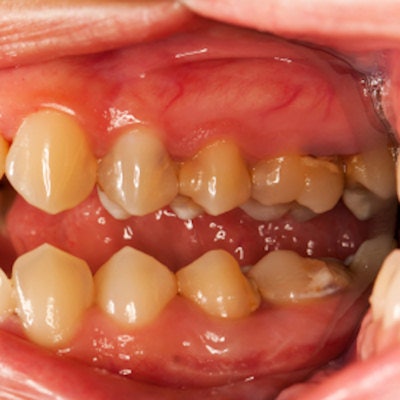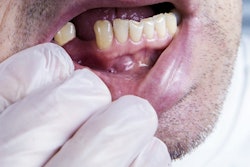
Lower socioeconomic status and ineffective oral hygiene habits directly predicted gingivitis in 12-year-olds in a new study. However, positive oral health beliefs and higher self-esteem predicted more frequent toothbrushing, which linked directly to more effective oral hygiene, the researchers reported in the Journal of Periodontology (August 5, 2019).
The cross-sectional study aimed to evaluate the effect that socioeconomic status had on the dental health, self-esteem, toothbrushing frequency, oral hygiene effectiveness, and gingivitis in adolescents with low social status.
The research included about 400 male and female students from Manaus, Brazil. The adolescents completed forms, answering questions about self-esteem and their dental behaviors and views, as well as the follow:
- Family income
- Their parents' education
- The number of goods owned by the family
- Household crowding
Dentists performed oral examinations to determine the participants' gingival status and how well they took care of their teeth. The data were collected between September 27 and November 30, 2016.
The prevalence of gingivitis was about 77%, and about 57% of all participants had tartar on at least one tooth, according to the study findings.
Surprisingly, the researchers could not confirm a direct link between low toothbrushing frequency and gingival bleeding, as they had expected.
This finding might have occurred because, although nearly 90% of the students reported brushing at least twice per day, nearly 40% of these participants had tartar on at least one tooth, indicating inadequate oral hygiene routines, according to the study authors.
Also, these results may be explained due to optimal oral hygiene hinging on the use of appropriate tools, adequate toothbrushing technique, and motivation, they wrote.
The findings suggest that socioeconomic conditions and psychosocial factors are relevant to toothbrushing frequency and gingival bleeding, but some study limitations must be acknowledged, the authors noted.
The study's cross-sectional design limits the interpretation of the causal factors underlying the reported associations, and there may have been some bias as toothbrushing frequency was assessed through self-reporting. Finally, a partial-mouth periodontal exam measured the students' gingival bleeding, which may have underestimated the disease's prevalence.
The findings show that social status, psychosocial factors, and oral health-related behaviors play a significant role in the periodontal status of adolescents, the researchers concluded.
"The implementation of strategies focused on these factors seems to be an important way to increase the effectiveness of oral health interventions and improve oral health in adolescents," wrote the authors, led by Reyce Koga, MSc, of the Federal University of Amazonas School of Dentistry in Manaus, Brazil.




















